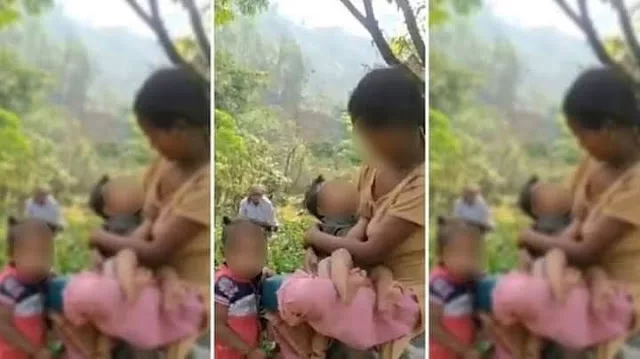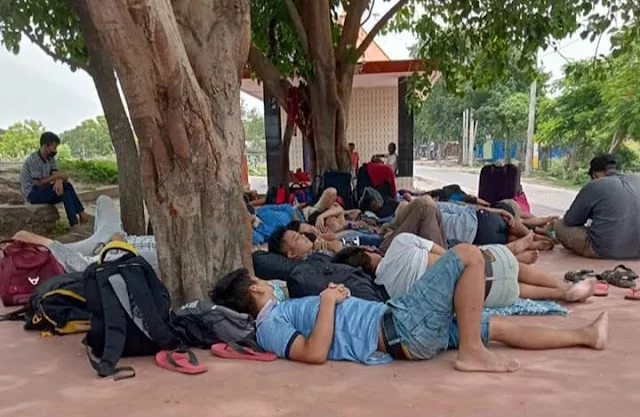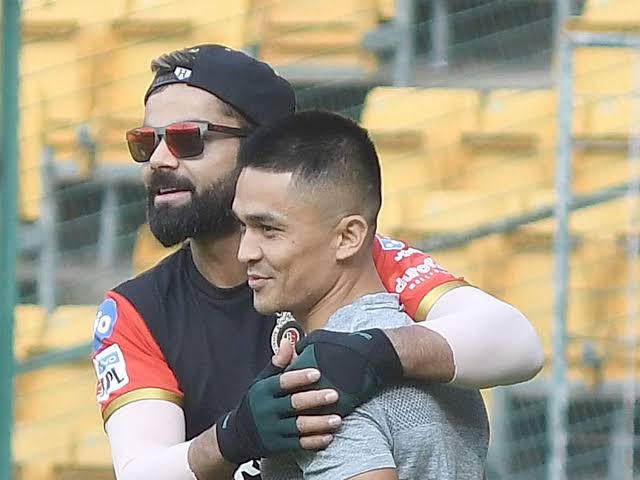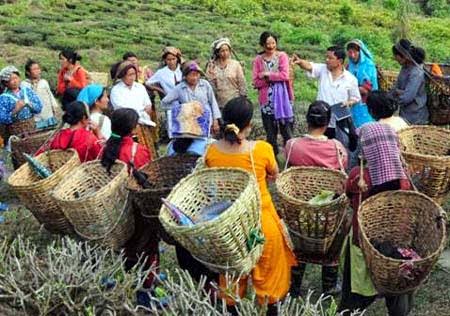Writes Pratap Chhetri
In October 1915, when a young Gurkha officer with royal blood, was recuperating at a London hospital, from wounds sustained in action at the famous Battle of Loss in the course of the First World War, a reporter chanced to interview him. Having heard about khukris of the Gurkhas, he asked the convalescing officer whether his boys got a chance to use their feared khukris. To this, Jodha, the officer said: “They do not often get the chance of using them. When they get near, the Germans hold up their hands. They have heard of our kukris.” Such was the fear of the simple but fierce khukri among the Germans. This brave and gallant soldier was Rana Jodha Jung Bahadur – the first Gurkha officer in the British Indian Army.
For the almost two hundred thousand Gurkha soldiers who fought in various theatres of the First World War, the name – Rana Jodha Jung Bahadur might have just passed off fleetingly as the name of just another soldier-comrade. Very few perhaps might have known about his accomplishments then and very few perhaps today know about his special place in the history of Gorkha soldiering in the past 200 years. Or the fact that he was one of the first nine Indians and the first Gurkha to receive a King’s Commission in the British Indian Army, who preceded even Field Marshal K.M. Carriapa’s batch. Or that, he gallantly fought and saw action in Egypt, France, Belgium and Mesopotamia during the First World War; was awarded the Military Cross and was Mentioned in Despatches, twice.
Rana Jodha Jung Bahadur was a product of the Imperial Cadets Corps (ICC), an exclusive preserve based in Dehra Dun which provided military training to young men from the aristocratic families of the princely Indian states. The ICC was a limited and deliberate experiment by the Raj to appease its Indian subjects particularly the rulers of the princely states, who had military expectations, of their wards or relatives being commissioned as officers in the regular British Indian Army, also known as His Majesty’s Army. Though the Corps was a failure, the Imperial Cadet Corps in some ways paved the way for the establishment of the Prince of Wales Royal Indian Military College in 1922, known today as Rashtriya Indian Military College (RIMC) and the Indian Military Academy in 1932; these two institutions were pioneers in the slow but gradual Indianization process of the Army during the British rule. One fact which pointed to failure of the ICC was that of the 68 graduates that ICC produced; only eleven were granted Commission in the Native Indian Land Forces.
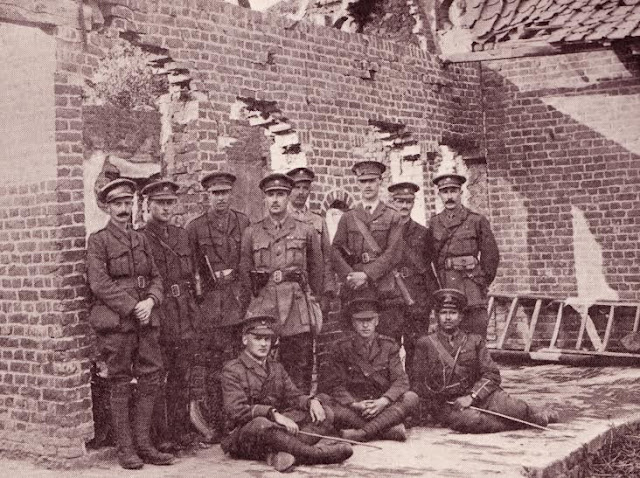 |
| ‘Rana Jodha(seated far right) with British officers of the Garhwal Rifles at Pont du Hem France 1915’ – Photo credit Ashok Nath Foundation Sweden |
Rana Jodha Jung Bahadur was one of the several grandsons of Sir Jang Bahadur Rana who founded the Rana dynasty in Nepal – the system of hereditary Prime Ministership. Jodha Jung Bahadur’s father was Padma Jung Bahadur Rana, one of the thirteen sons of Sir Jung Bahadur Rana. His father fled to India in 1887 following an unsuccessful palace coup in Kathmandu and settled in Allababad. It was in Allahabad that Jodha was born in 1890. He perhaps had his early education in one of the four chiefs’ school established to impart British system of education. In 1910 he gained admission into the ICC and in 1913 he was commissioned as a Second Lieutenant in His Majesty’s Native Indian Land Forces (HMNILF). He had initial training with the 1/3rd Gurkhas and the 1st King George’s Own Sappers and Miners and in February 1914, he was appointed as the Commandant, Tehri-Garhwal State Sappers. The Native Indian Land Forces were the standing armies of the princely Indian states. They were also known as Imperial State Forces and served in various theatres of the First World War along with the regular Indian Army.
At the outbreak of the First World War in 1914, India was dragged into the War unwillingly while the Indian rulers, of their own volition offered their troops for war service. As the War progressed on the Western Front in France and Belgium, the British forces and the Indian Expeditionary Force ‘A’ consisting of cavalry, infantry and Imperial service troops suffered devastating losses. Reinforcement drafts were urgently required. One such reinforcement draft was a contingent of 108 men of Tehri Garhwal State Sappers commanded by the young Lieutenant Rana Jodha sent to bolster the 39th Garhwal Rifles, who had suffered heavy casualties on the frontline. They reached France in March 1915 via Egypt.
Earlier in 1914, major battles such as the First Battle of Ypres, the Battle of Festubert and Givenchy had been fought while in 1915 offensives like the Battle of Neuve Chapelle, the Second Battle of Ypres, the Battle of Aubers Ridge, the Battle of Festubert and the Battle of Loos took place on the Western Front in France and Belgium.
It was in the Battle of Loos – first, in the action at Pietre, not far from Neuve Chapelle on September 25th 1915 and the second at La Bassee on October 13th 1915 that his bravery was noticed. During both these instances; he was Mentioned in Despatches. Subsequently, Jodha was awarded the Military Cross (MC) in November 1915. He was then just a young 25 year old officer.
On October 12, 1915 he was hit by a rifle bullet in the arm but it luckily missed his bone, so he got the unit doctor to bind the wound and was ready for action the next day. However whilst heavy fighting the next day, a bomb explosion wounded him on the neck and he lost consciousness. It was during his treatment for this that the famed newspaper interview too place.
 |
| Photo credit to Wikimedia Common |
An extract from the official War Office account of Jodha’s winning of the Military Cross reads: “During a feint attack made by the Indian Corps to the north of La Bassee Canal on October 13, this officer commanded a double company with great ability and conspicuous gallantry in the face of fierce fire from rifles, machine-guns, grenades and bombs……… His bravery was previously observed on September 25th last, when he led his company with marked gallantry and dash right up to the German wire under heavy rifle and machine-gun fire.”
Rana Jodha and Captain Zorawar Singh were the only Indian officers(Commissioned) to get the Military Cross during the First World War. It may also be worthwhile to mention Darwan Singh Negi, the second Indian to be awarded the Victoria Cross (1914), and another Indian recipient of the Victoria Cross in 1915 – Gabar Singh Negi both belonged to the 39th Garhwal Rifles. It was this unit, which Jodha was attached to, as young officer on the Western Front.
It was also in the Battle of Loos that Jodha was Mentioned in Dispatches (MiD) for the first time and the following MiD published by the British Military London News mentioned: “Rana Jodha Jang Bahadur, who, in spite of being wounded, continued to lead his men against the Germans, and did not desist until a second wound in the neck rendered him unconscious. The Rana displayed great tenacity, leadership and conspicuous gallantry by leading his company right up to the German defenses in the face of heavy fire”.
In August 1917, the War Cabinet deliberated on granting of King’s commission to the natives of India and they accepted in principle the appointment of Indians to commissioned rank in His Majesty’s Army; the nature of which was to be finalised later. The War Cabinet also agreed granting King’s Commission (seven captaincies and two lieutenancies) to nine Indian officers of the Native Indian Land Forces who had served in Imperial Service Troops in the War, immediately. One of the lieutenants was Rana Jodha Jung Bahadur. Their appointment was published in the London Gazette on the 25th August 1917. Thereafter, he was attached to the 3rd Brahmins and served in Mesopotamia from September 1917 to October 1918. For his service in Mespotomia, he was made a Member of the British Empire (Military Division). He was also appointed as Honorary Aide-Camp to the Viceroy, Lord Chelmsford from 1916 to 1921.
In 1919, Jodha served in the Afghan War and later in the Waziristan Campaign of 1919-1920, serving there till 1924. Thereafter he was posted with the 1/23rd Sikhs, 12th Bombay Pioneers and Madras Pioneers and retired as a Major from the Indian Army is 1933. After his retirement, he served as Commandant, 1st Mysore Infantry from 1933 to 1936. In 1936, he was appointed as Commandant, Tripura State Forces and in 1940 was promoted to Colonel and made the Commander-in-Chief, Tripura State Forces.
Despite being such a decorated and accomplished officer, it is intriguing and surprising as to why Jodha was not given more important appointments of greater responsibilities in the regular Army during the post World War I period. The British were very reluctant to give Commissions to Indians from the start and this perhaps made them skeptical of Indians officers in the Army. This could have been one of the reasons. By his retirement in 1933, he had served for 20 years and maybe he was due the normal course of retirement. Or, was he just unlucky. Or was it that since, Jodha was not a Sandhurst trained officer, the younger officers edged him.
Acknowledgements
1. The Imperial Cadet Corps and Indiansation of the Indian Army’s Officer Corps, 1897-1923 : A Brief Survey – Dr. Chandar S Sundaram, formerly with CAFHR, USI of India.
2. Online resources of CAFHR, USI of India
3. Ashok Nath Foundation, Sweden
‘This article was published in the November 2015 issue of Eastern Panorama’


